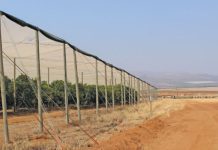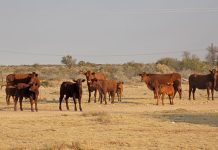Agricultural policy makers face a global agricultural landscape that has completely transformed in the last 10 years. That’s not to mention the ongoing challenge of South Africa’s dualistic farming sector, divided between commercial and developing farmers. Prof Johann Kirsten breaks down the issues, and proposes some solutions.
In the last decade new driving forces have rapidly redefined the global food and agricultural landscape. The current global financial crisis is probably going to be a major factor for change. Others, such as income growth, climate change, high energy prices, globalisation, biotechnology, food safety concerns and urbanisation have already transformed food consumption, production, and markets.
The private sector’s influence in the world food system, especially the leverage of food retailers, is also rapidly increasing. Changes in food availability, rising commodity prices, and new producer-consumer linkages have crucial implications for poor and food insecure people.
All this must be considered when designing agricultural policy and adjusting research agendas in agriculture, nutrition, and health. Other factors that will continue to shape the global agricultural landscape include:
- changing consumer demands for nutritious and safe food, produced in an ethical and environmentally sound manner,
- the sharp increase in global demand for protein and basic staple food, largely driven by India and China,
- growing demand for biofuel versus food security concerns,agriculture becoming a source for natural fragrances, colourants and medicines,the impact of HIV/Aids and other diseases on agricultural productivity.
It was predicted that large, multinational companies in tightly specified supply chains would dominate this new landscape, supplying a growing urban population that has no means to produce food. The financial crisis might make this prediction obsolete, but South Africa must consider an urbanised population of almost 60% in any policy design. Simultaneously we must deal with unemployment and poverty in the rural areas.
Increased urbanisation and urban poverty are important new dimensions in food security, making affordability and availability of much greater concern with less emphasis on access to productive resources.
Agriculture in South Africa
It’s vital to acknowledge and understand agriculture’s biological nature. Agriculture can’t be switched on and off at will like a factory, and there’s a unique time line for agricultural adjustment processes. Thus it isn’t always possible to use agriculture to achieve only political and social objectives. Its main purpose of sustainable food production and export earnings should be maintained and protected when agricultural policy is designed and targets and dates set.
Global changes have increased the need for good agricultural policy and a good strategic framework to guide it. The current Strategic Plan for South African Agriculture provide many of the sound principles for a good policy, which is vital to grow agriculture and the rural economy.
The changing global context, merged with South Africa’s own realities, creates exceptional difficulties for agricultural policy and strategy. Our dualistic agricultural sector continues to create tension in policy design and implementation. More than ever we need a strong state to uplift poor and disadvantaged farming communities and integrate them into mainstream agriculture. Meanwhile, government can’t neglect commercial agriculture’s growth prospects and needs to ensure regulations, systems and support services are in place.
For a long time to come government will have to plan, budget and design for the sectors’ dual requirements. To ensure a sustainable future for agriculture, neither side of our dualistic farming spectrum should be neglected. Clearly it’s not a matter of resources or the need for more plans, but of our capability to implement plans.
In discussions with major sector roleplayers it’s repeatedly said that, to raise productivity and agricultural growth in our poorest regions, a combination of interventions in different policy areas is needed.
Redeploying and tailoring old policies
Despite our deregulated and liberalised agricultural economy, it’s clear the state must adapt the role it used to play, which could include “new” tasks such as regulation, organisation and setting norms and standards. Simultaneously many of the excellent programmes that established white commercial farmers in the 1950s and 1960s can be redeployed to develop and grow farmers from disadvantaged communities. Despite certain changes and improvements, agriculture is still burdened by policy and institutional limitations similar to those of a decade ago, so primary agriculture, the input supply industry, processors and agribusinesses in general can’t be developed to their full potential.
The changing agricultural landscape, the sharp rise in food prices and extreme income and asset inequality (as highlighted by the 2005 Income and Expenditure Survey) are a tough challenge to stakeholders and policy makers. If we remain committed to reducing poverty and achieving sustainable growth we must unleash agriculture’s powers for development.
Given agriculture’s complexity this is no easy task and requires sound leadership at all levels. However, a policy agenda with buy-in across the sector, clear implementation programmes and effective monitoring and evaluation can go a long way.
Agricultural and food policy instruments
If the state has a strong role to play in agriculture, it can use various instruments to engage with the agricultural and food industry.
Historically one of the most important has been government expenditure, typically relating to:
- investment in infrastructure (irrigation, silos, transport and marketing),
- providing and subsidising credit,
- funding research and extension,
- financing the deficits related to high producer prices,other direct payments and
support programmes to farmers.
- Second, controls could include price and import control, marketing restrictions, controls on access to land and irrigation water and controls on production levels. Third, many countries also directly manage the production and marketing of agricultural commodities through state-controlled enterprises or parastatals – such as the former agricultural control boards in South Africa.
The tendency in most parts of the world has been to reduce state ownership of agricultural assets, and there’s been international consensus that direct government intervention in the economy should be reduced. As the prices of agricultural commodities and food are determined by macro-economic conditions, exchange rates and international commodity markets, there’s very little that remains in the ambit of agricultural ministries.
This is certainly the case here. With trade deregulated and liberalised in South Africa since 1994, what is there in agricultural policy now other than research, extension services and administering phytosanitary measures? In a liberal market economy, is agricultural policy an oxymoron?
Market and service access to the poor
One of agricultural policy’s principal tasks is to improve the functioning of product and factor markets. Poor households’ access to markets and services also requires urgent attention. This will in some cases require infrastructure investments, but most importantly it needs good policies to enhance access to land, finance, water and extension services.
As many policies in other ministries directly impact on agriculture, the Department of Agriculture needs to take centre stage to ensure better policy coordination with areas such as Trade and Industry, Labour, Water and Environmental Affairs, etc.
On this topic, Jeremy Cronin recently argued for a two tier cabinet system, since the current system of clusters has not realised the expected results.
Next week: The role of policy makers and policy analyses in policy decisions.
E-mail Prof Johann Kirsten at [email protected] or call (012) 420 3248. |fw








